It’s not easy to find. I expected it to be near the roadside steles that have been in place for years but it’s not there and there are no signs to indicate where they have built this memorial and museum to tell the story of the camp at Rivesaltes. I have to wonder if there isn’t still an element of shame alongside the better instinct that allowed it to be built so we would not forget. More likely just a bureaucratic delay, the museum only opened to the public this week. You can find it at the base of the wind farm.
Camps of all kinds are, of course, numerous and widespread; from Auschwitz to Manzanar they are a feature of life on a planet where war is common. But Rivesaltes is unique in the variety of different populations it has detained: Spanish refugees from the civil war; German intellectuals fleeing Nazism, Roma, Jews, German military prisoners of war, Harkis. Rivesaltes holds the history of twentieth century European conflict.
The site of the camp is huge, over 600 hectares that now wraps around an industrial zone, and the museum has been built behind that zone, beside a farm of wind generators, far from the department road. You would not find it if you didn’t know where to look.
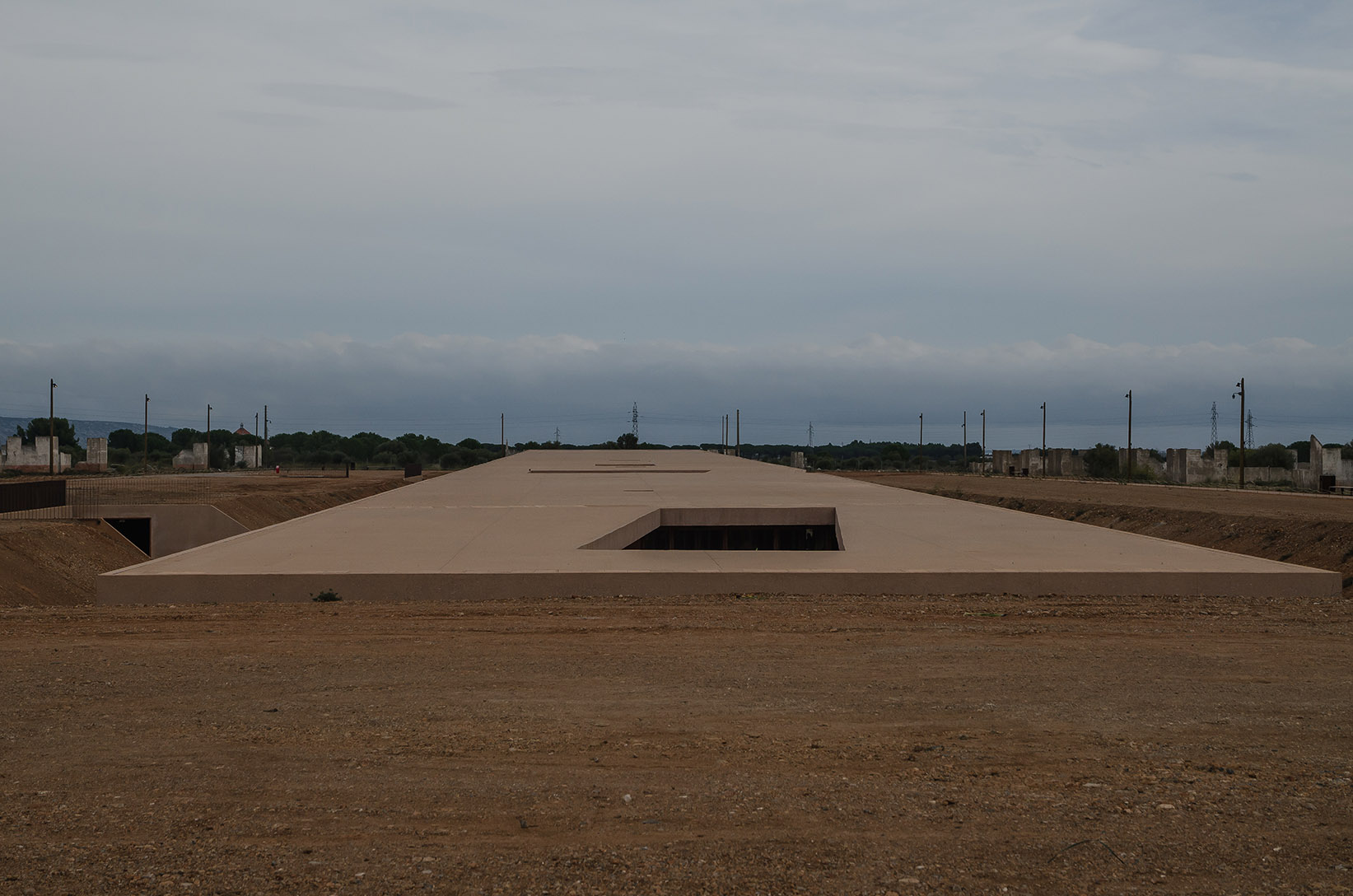 The museum building itself is built into the ground and from above resembles a soaring monument at rest, surrounded by the crumbling barracks and latrines of the detention camp on their way to returning to the earth. There is a path circling the building and, on an overcast day with the wind blowing, you can almost feel what it must have been like to be imprisoned here.
The museum building itself is built into the ground and from above resembles a soaring monument at rest, surrounded by the crumbling barracks and latrines of the detention camp on their way to returning to the earth. There is a path circling the building and, on an overcast day with the wind blowing, you can almost feel what it must have been like to be imprisoned here.
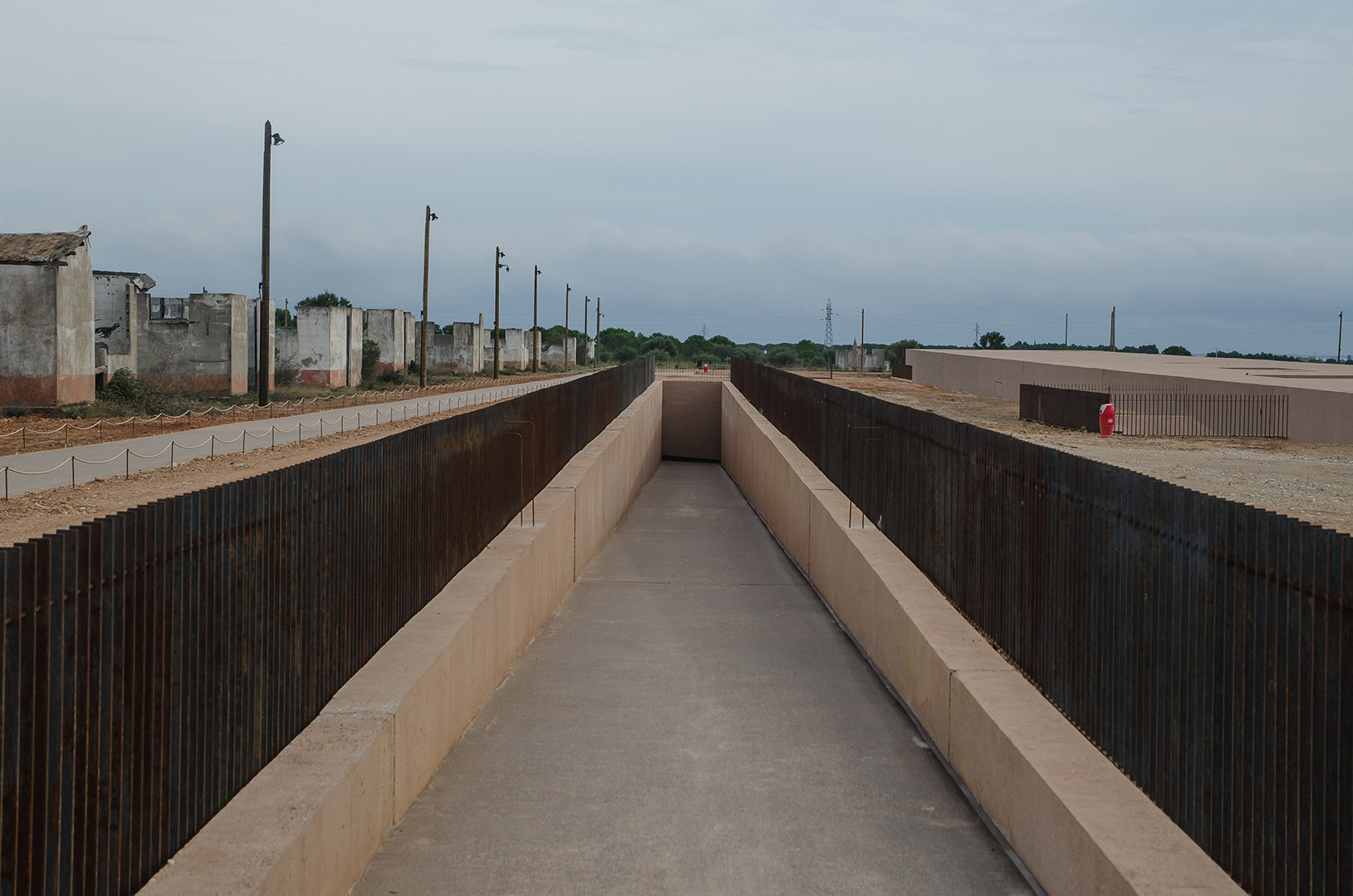 The entrance is a long descending ramp that appears to lead nowhere, but turns to the right to reveal a door.
The entrance is a long descending ramp that appears to lead nowhere, but turns to the right to reveal a door.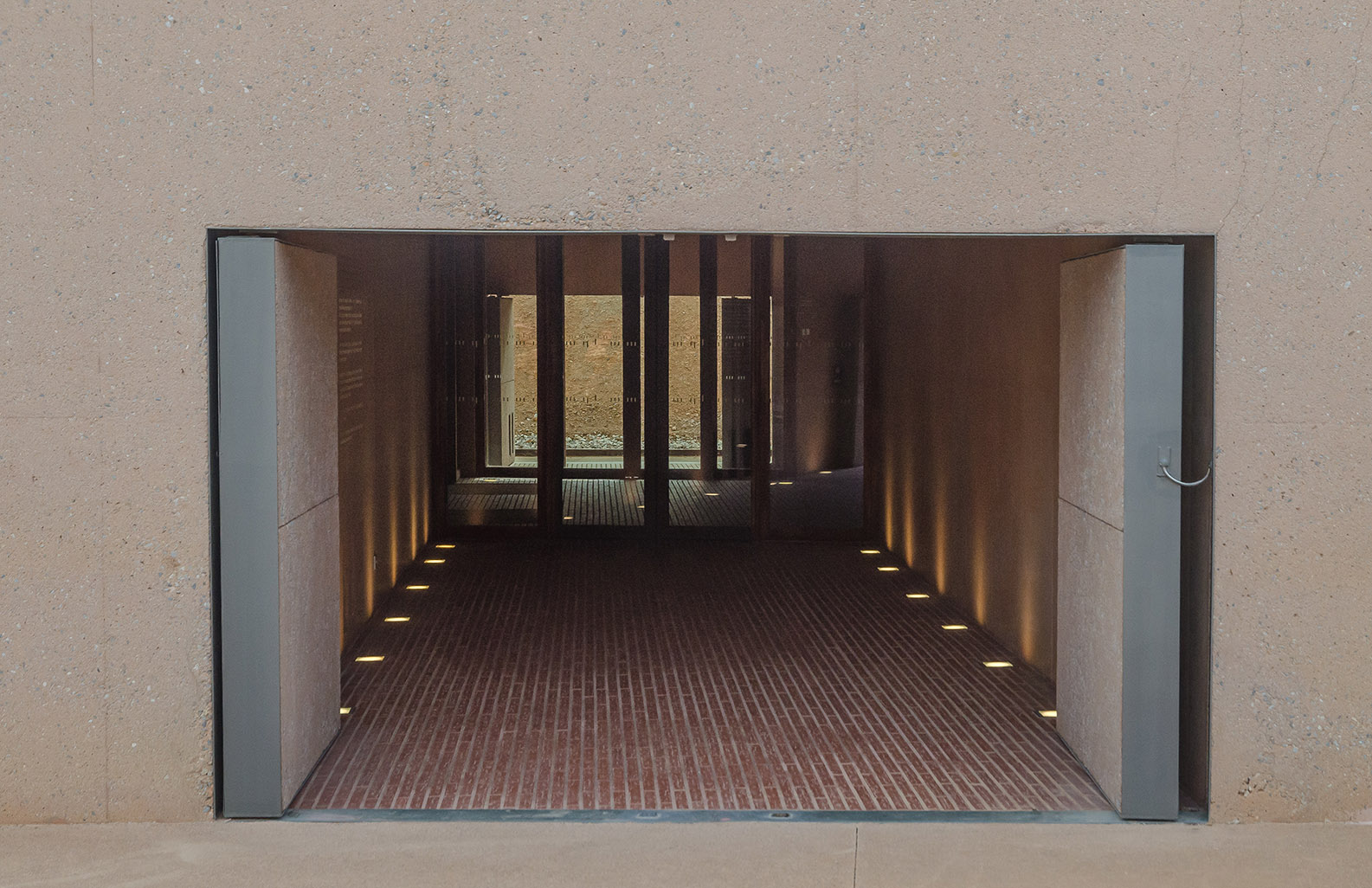
The receipt for my eight euro entrance fee is printed with the name Marie Weiss-Loeffer, a young Roma woman, and the date of her escape 10 Novembre, 1941.
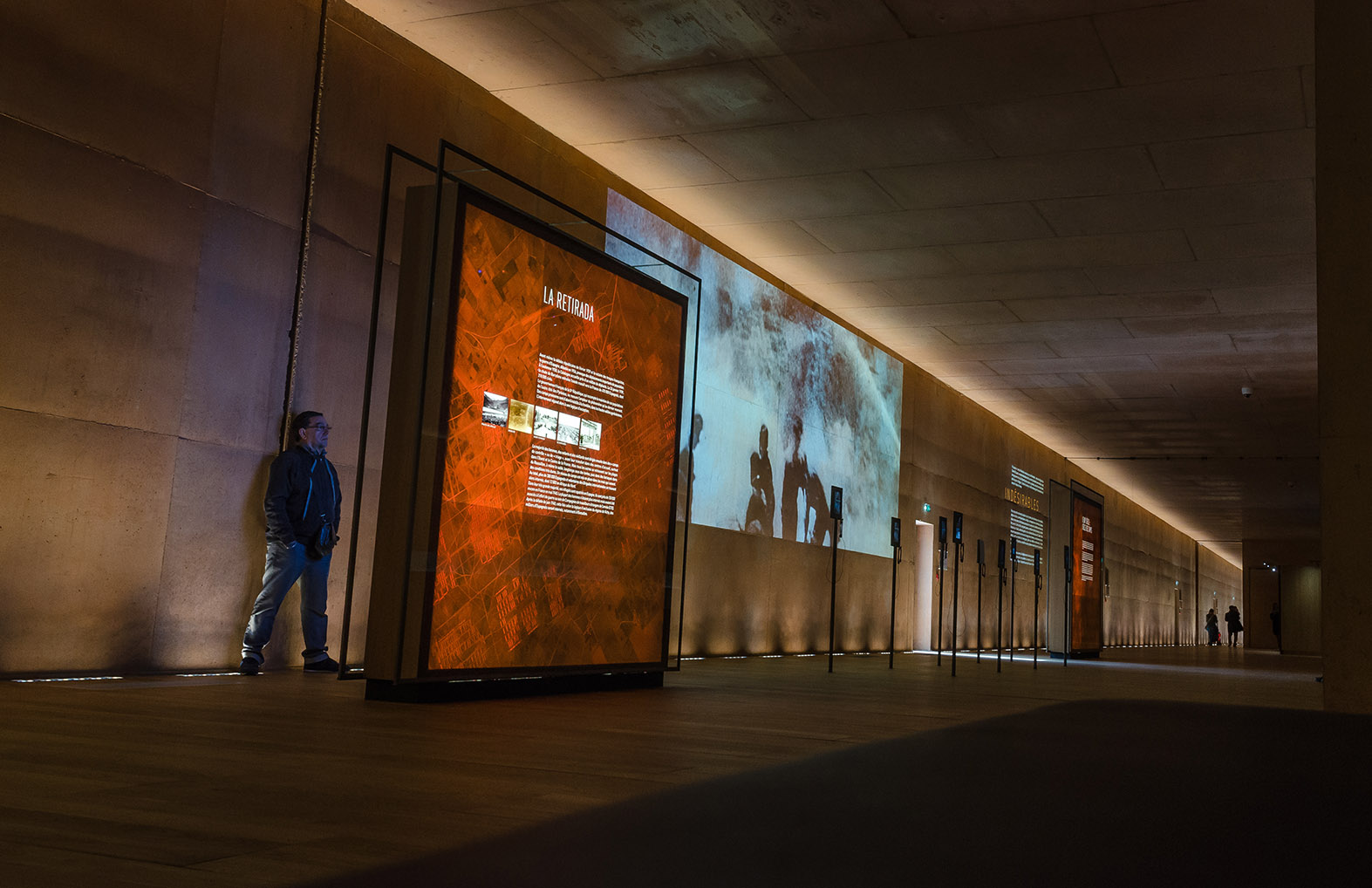
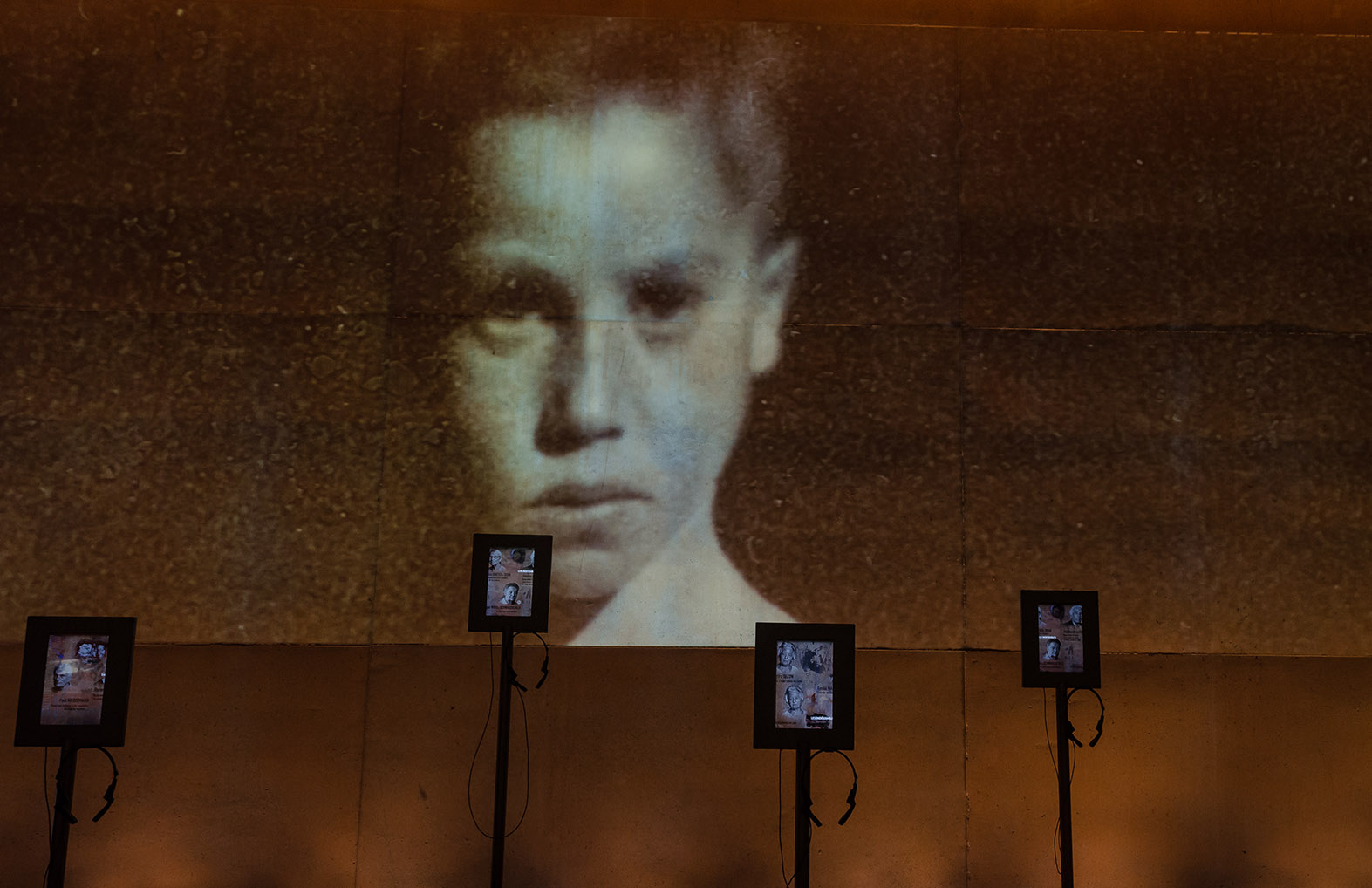 The main room is divided into sections that tell the story of each of the populations with historical footage projected on the rough cement walls, oral testimonials accessible through tablets, and informational films on video monitors. And there is also a look forward, a consideration of how we will deal with the same issues in the 21st century. The overlapping sounds and the design of the structure itself simulate the lack of privacy in barracks life.
The main room is divided into sections that tell the story of each of the populations with historical footage projected on the rough cement walls, oral testimonials accessible through tablets, and informational films on video monitors. And there is also a look forward, a consideration of how we will deal with the same issues in the 21st century. The overlapping sounds and the design of the structure itself simulate the lack of privacy in barracks life.
The overwhelming amount of information takes its toll and you begin to understand the incomprehensible scale of devastation. Camps like this were created to separate us from those we fear. They continue to be built today.
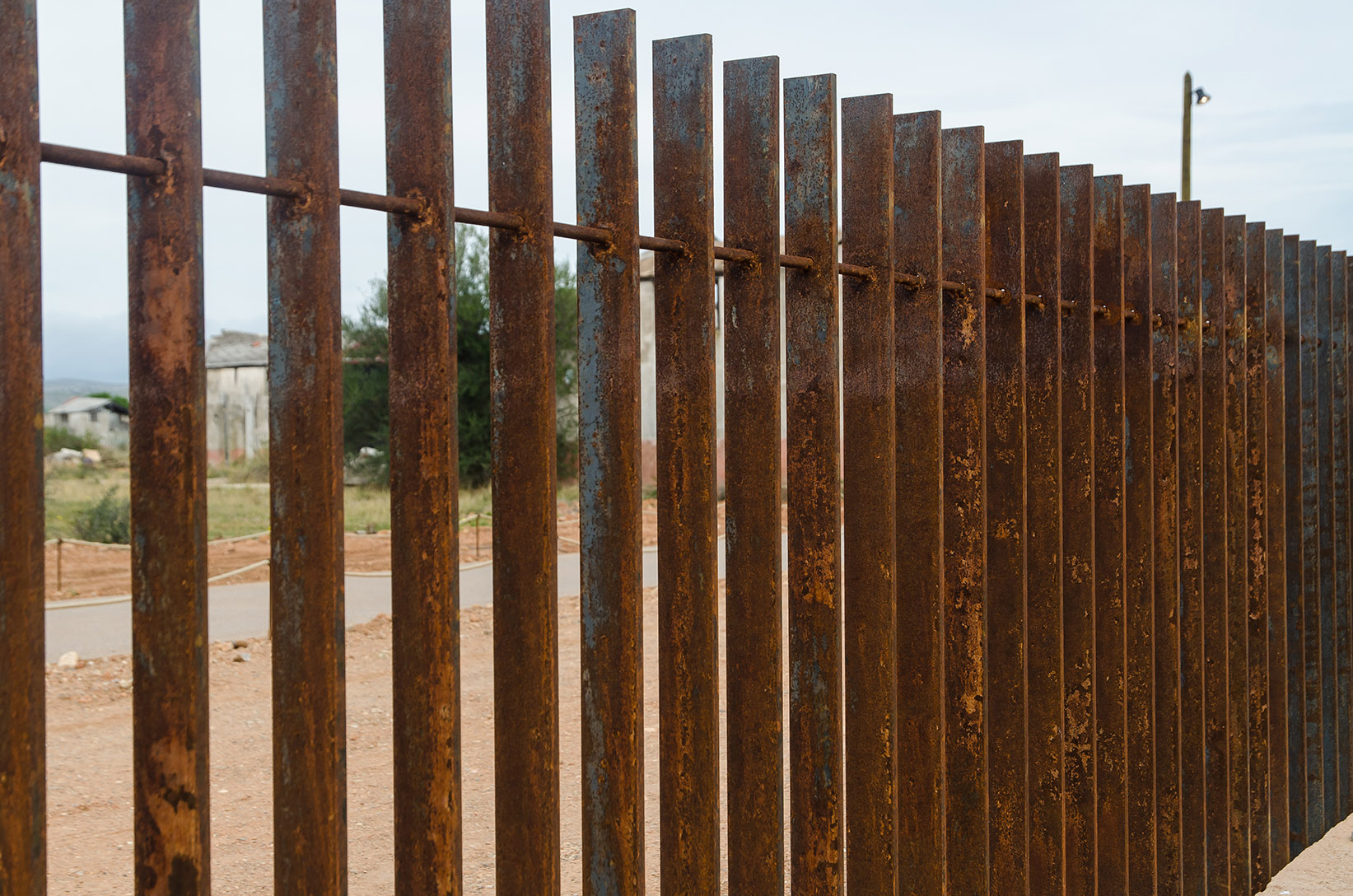 http://www.memorialcamprivesaltes.eu
http://www.memorialcamprivesaltes.eu
©2015 Ron Scherl

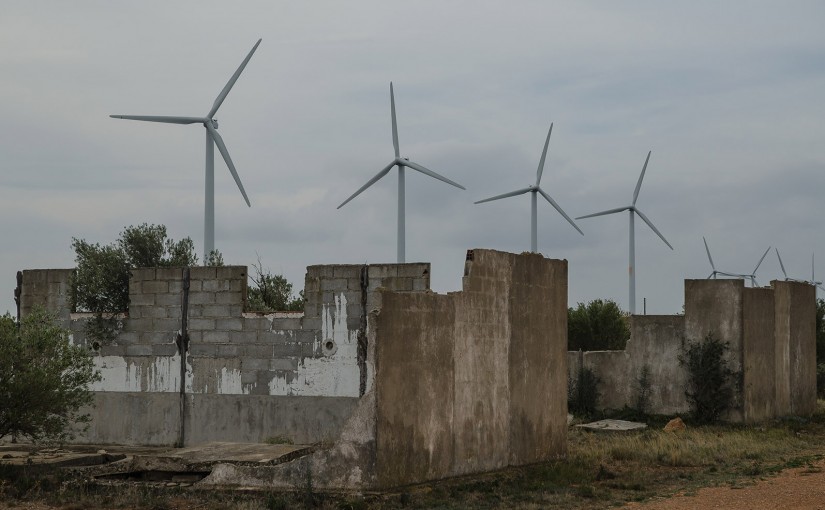
Thank you for the informative description.